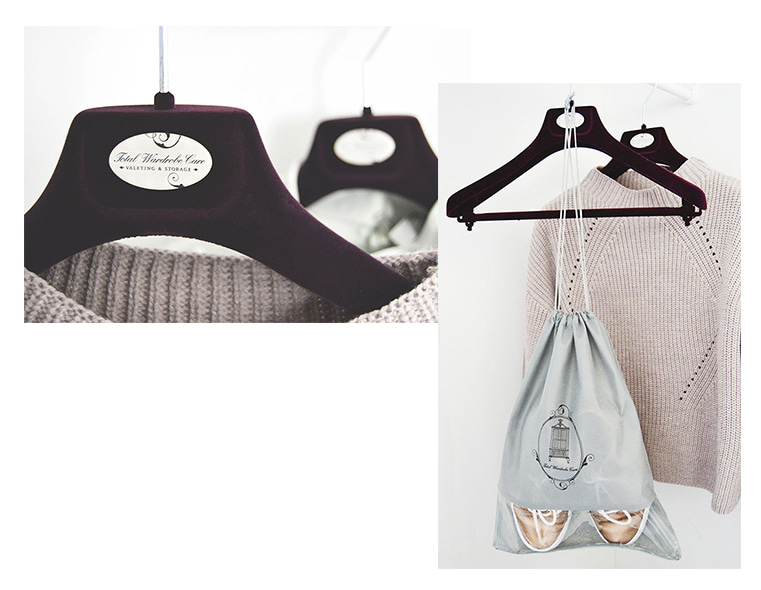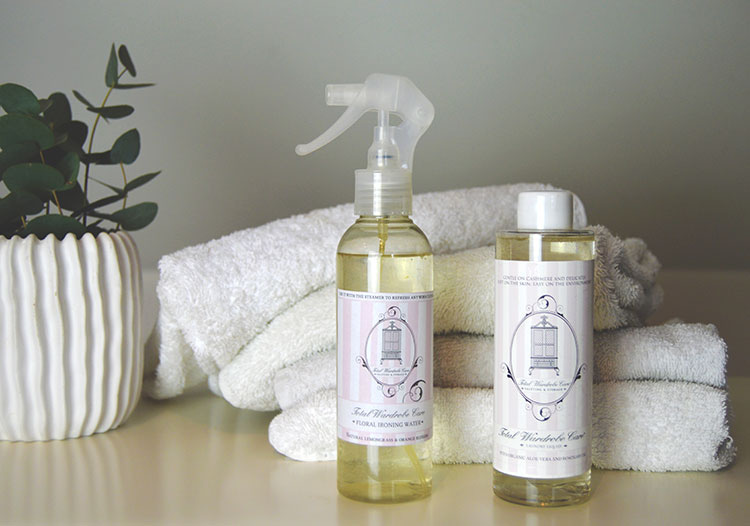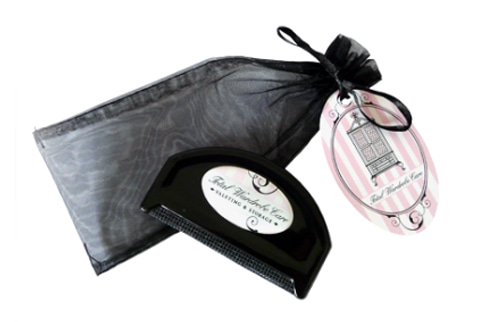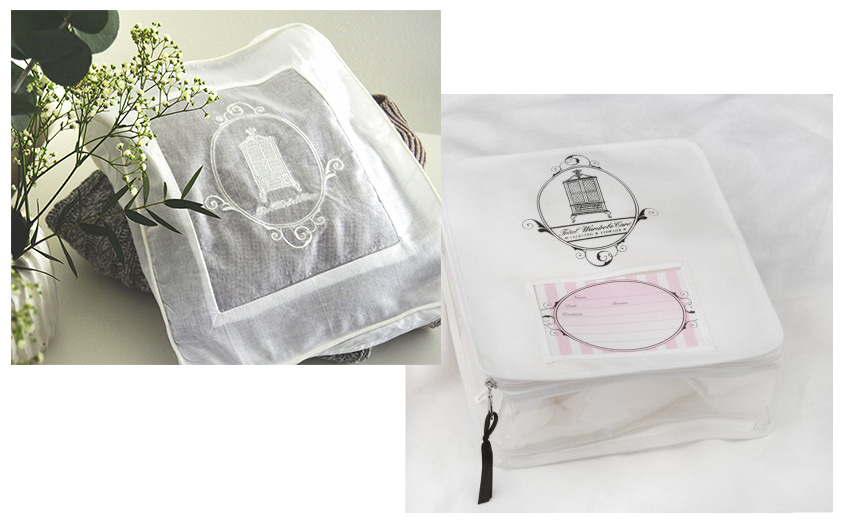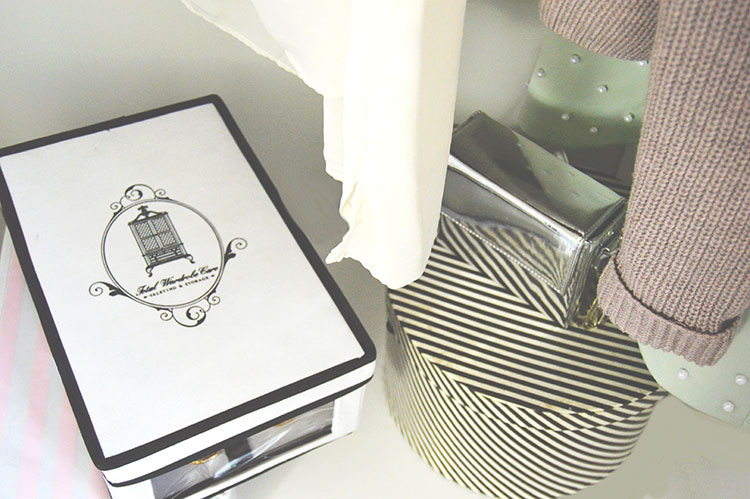Caring for your wardrobe
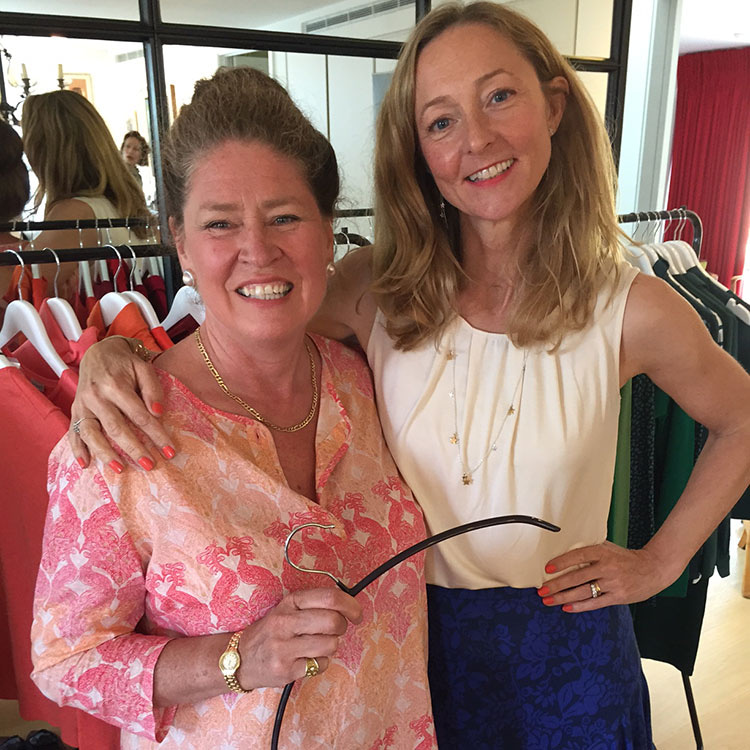
From moth solutions to the best hangers, we asked Julia Dee, founder of Total Wardrobe Care, to share her secrets for keeping your clothes pristine all year round
What would you recommend for tackling a moth problem?
A few moths flying around is not an epidemic. But for the price of a lunch, a moth box, which is a sticky pheromone moth trap, monitors the problem and should be kept in each room throughout the year. The moth season is May to October but once the moths have got a hold they will happily live throughout the year in your wardrobes. They eat keratin in natural fabrics and fibres, which include your clothes, carpets, blankets, upholstery and fur and sheepskin. If that happens to have skin and hair particles, a bit of food or baby sick combined with dog hair then it’s a smorgasbord of delight for the moth. The female is programed to eat mate and lay eggs preferably in a dark and undisturbed area with a food source. The male just wants to mate. Then the baby (larvae) eats his way out of his cocoon and chomps into your clothes.
So….
Keep clothes clean and protected.
Keep wardrobe and drawers closed.
If it’s a walk-in wardrobe keep doors and windows closed.
Put jumpers into knitwear bags.
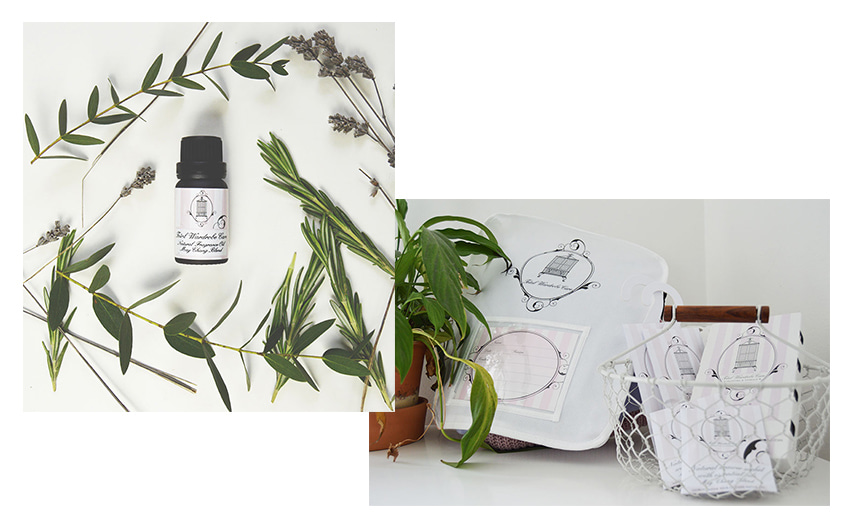
Add natural fragrances to the wardrobe to repel, i.e. hanging moth sachet (the female moth doesn’t like strong smells.)
Keep a sticky moth trap in every room.
If you start to get more than five or so moths in your moth trap… call us and we can talk you through the next stages.
Is it best to organise a wardrobe by colour or outfit?
In my experience, the easiest way is to put clothes into happy families – i.e. trousers together, jackets together, etc, and then colour coordinate. If outfits are put together you may miss a new and interesting combination. So when you open your wardrobe in the morning to get dressed, you may think I really want to wear that skirt, then you take it out and match it up against tops and jackets and something different may jump out at you. Then it always goes back in the same place.
Add natural fragrances to the wardrobe to repel, i.e. hanging moth sachet (the female moth doesn’t like strong smells.)
Keep a sticky moth trap in every room.
If you start to get more than five or so moths in your moth trap… call us and we can talk you through the next stages.
Is it best to organise a wardrobe by colour or outfit?
In my experience, the easiest way is to put clothes into happy families – i.e. trousers together, jackets together, etc, and then colour coordinate. If outfits are put together you may miss a new and interesting combination. So when you open your wardrobe in the morning to get dressed, you may think I really want to wear that skirt, then you take it out and match it up against tops and jackets and something different may jump out at you. Then it always goes back in the same place.
What hangers should I use? Are there specific ones for different items of clothing?
Hangers are very important to keep your clothes pristine in the wardrobe, so that even after six months of hanging there, once you pull them out to wear they won’t need ironing and there are no funny creases in the middle of your skits or lines across the knees of your trousers, or stretched areas in the sleeve head of your Kettlewell top.
Jackets need a wider shoulder area to fill out the sleeve and mimic your shoulders.
Trousers ideally should be hung from the waist with peg hangers. If you don’t have the hanging length in your wardrobe then a trouser hanger with a good padded hanging bar so you don’t get the knee crease.
Skirts also need the peg hanger, and should definitely not be hung from the hanging loops at the sides, as the skirt will dip in the middle and be squashed and have horrible yawning creases down the front.
What are your tips for caring for cashmere?
Try to keep it as clean and protected as possible.
Gentle hand wash.
Put in to shape and dry flat if possible. Light steam iron if necessary.
Use the cashmere comb to de-bobble, don’t use scissors or an electric de-bobbler as these can both slip and, ooops, a hole!
If they are to be hung use the rubber non slip coat hanger that is 38cm wide and curved so that it doesn’t leave misshapen shoulders.
If they are not being worn, then store out of season knits in a knitwear bag.
Is there any wardrobe maintenance I should be doing throughout the year?
Twice a year, in spring and autumn, have a mini detox. Take everything out, re-evaluate, get any repairs done, take to charity or sell anything that is not wanted. Check everything is hung correctly on the right hanger and that everything is in order. Have a big clean of the inside of drawers and cupboards, then spray an anti-moth linen spray on the wood and replace all anti moth scented sachets,
Can you share any helpful ironing tips?
- Invest in a good steam iron.
- Test on the inside of the garment for temperature.
- Do read all care labels before you cut them out.
- To stop shine, take a tea towel and wet it and wring it out so its damp all over, put this on top of the garment and then press gently, this will stop any shine.
- To steam only, hang the garment on a hanger and on a hook, then put the iron into the upright position and gently guide the steam over the garment, almost stroking it, this can help gentle fabrics drop their creases.
- Let the garment cool before it’s folded or put back into the wardrobe.
What should I do with any unwanted clothes?
Find a local charity shop. Visit them before landing on them with a large box to see what they are collecting. If the clothes have a well-known desired label, try selling in a second- hand shop, or on ebay. If it’s an expensive designer piece, try Rebelle, Hardly Ever worn it, Vestiaire, or ShonaMac – websites that have a good following and might achieve a better price. Then any money raised can be put towards a new key piece or be given to charity.
Is it best to leave alterations to the professionals or is it ever worth trying yourself?
I have run an alterations business for 25 years and this is how I learn about my clients’ needs for wardrobe-care products. A good seamstress is like a good hairdresser or beautician – hang on to them. It’s best to get a personal recommendation.
Try to get the garment fitted by the alteration professional – sit down, wear the correct shoes and underwear and ask to see the back view.
There is nothing to stop anyone doing their own alterations if they have good sewing skills. You know who you are!

How should I go about doing a wardrobe edit? How do I decide what goes and what stays?
The first step is an image overhaul. Find a good consultant to do your colours and style, which will give you the blue print for your wardrobe, a job that is quite daunting and hard to do on your own. I would also recommend taking advice from a wardrobe buddy (or your stylist). Commit to do it for each other – get rid of the kids, switch off the mobiles, get the rations in and then go for it. It will need your best buddy to say to you, “How many ugly cardies do you really need?”, “How many gardening jeans is it necessary to have?”, ‘Really would you want the man of your dreams seeing you in that matted old dressing gown?” A friend will ask pertinent questions you know deep down. It’s also worth reading Marie Kondo’s Magic Art of Tidying. My rule is: Does it spark joy? Or as William Morris said: “Do not have anything in your home that you do not believe to be useful or beautiful.”
What is the best way to store shoes?
This really depends on space. Oh, for a lovely shoe cupboard built with slightly slanting shelves or drawers that pull out. Most people don’t have this luxury, so other options include the bottom of the wardrobe, under the bed, or perhaps even an old book case.
I never seem to get it right when it comes to packing for a weekend break. Any words of advice?
This really depends on where you are going and what you are going to do. Is it a quick weekend city break in Europe with 10 kilos or packing the car and driving off?
I have invested in a collapsing two-foot garment rail from Morplan. Then I hang all the clothes I really want to take and then cull, until you have the correct number for the days and nights. Bearing in mind that garments can be worn twice or more and rinsed out.
There are lots of lovely packing lists on line to get you going!
Any other tips for prolonging the lifespan of my wardrobe?
I think if possible have a good mix of some investment key pieces and some cheap and cheerful which can be updated every season. Then general care, dry clean or launder, alter or repair and a good hanger.

